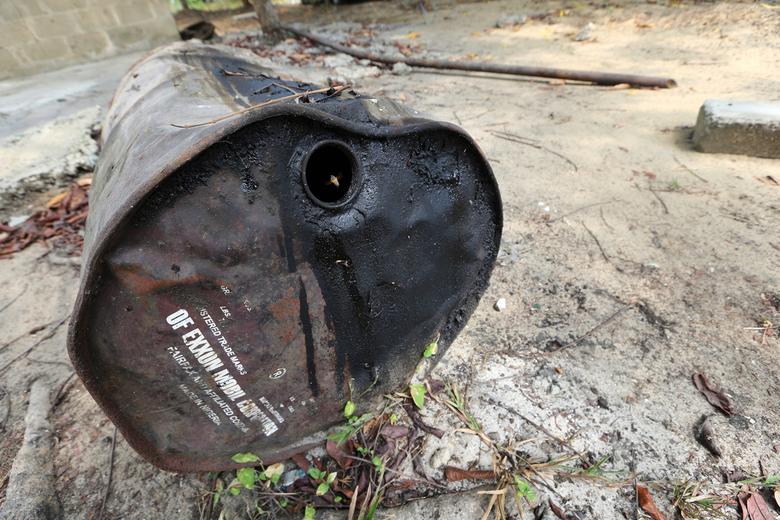
OIL & GAS LOSSES: $150 BLN

Investors have suffered losses of at least $150bn in the value of oil and gas company bonds, as the slump in crude prices since the summer of 2014 has fuelled fears of a wave of defaults in the US and emerging markets.
The 300 largest global oil and gas companies have also seen $2.3tn sliced from their stock market value over the same period, a 39 per cent slide since oil began its decline, an analysis by the Financial Times has found.
The losses show how intense the financial strain on oil producers from falling crude prices remains, in spite of the partial recovery in prices since January. Oil is still down about 65 per cent from its June 2014 peak.
Banks have also been increasing their provisions for energy-related losses on their lending. With several banks having loans to the industry equivalent to more than 40 per cent of their equity, lenders have tightened loan agreements with oil producers, and capital markets remain closed to the lowest rated groups.
More than $150bn has been shaved off the value of 1,278 actively traded bonds denominated in dollars, euros, sterling and yen since Brent crude hit almost $116 a barrel in June 2014.
Borrowing by oil and gas companies has soared over the past decade. Their total debt, including loans, almost tripled from $1.1tn in 2006 to $3tn in 2014, according to the Bank for International Settlements.
The borrowers with the steepest increase in debts relative to their assets included US independent production companies caught up in the country's shale boom, and national oil companies from emerging economies including Pemex of Mexico, Petrobras of Brazil and CNPC of China.
Cheaper oil can act as a stimulus to global growth, by redistributing real incomes from producing countries to consumers, who are often seen as more likely to spend the gains they make.
However, Hyun Song Shin, chief economist of the BIS, said weak oil prices had also added to volatility in equity and bond markets.
"Low oil prices fuel a reduction in risk-taking, and when there is less risk-taking, asset prices will fall. It can lead to a downward asset price spiral," he said.
The drop in crude has confounded portfolio managers who had bet on a stabilisation last March, when prices briefly rallied. The subsequent decline was a blow to many investors who bought bonds just before prices took a second and deeper dive lower.
That downturn has weighed heavily on funds investing in subinvestment grade corporate debt, with portfolios managed by Franklin Templeton, Western Asset Management, Nuveen, American Funds, John Hancock, Loomis Sayles and USAA suffering losses over the past 12 months.
The effect has been even more pronounced on funds that focused explicitly on the energy sector: two Advisory Research funds investing in pipelines and energy infrastructure have declined by more than 35 per cent over the past year.
Twenty of Europe's biggest banks have energy loans totalling almost $200bn between them — enough to wipe out a quarter of their common equity. In the US, twenty of the leading banks have loans totalling $115bn, or 11 per cent of their common equity.
The French banks stand out for having some of the highest oil and gas exposures relative to their equity.
BNP Paribas, whose $12.8bn of loans to oil and gas companies is the highest of the French banks, had "significantly reduced" its activities in the sector, CFO Lars Machenil said.
Natixis, which has the highest exposure relative to its equity of any European bank, has also been pulling back, granting 15 per cent fewer loans in the fourth quarter of 2015 than a year earlier. The bank said it was "confident" about its exposure because most of its borrowers were not exposed to oil price risk.
The recent rally in oil prices has provided a fillip to investment managers. Several of those most exposed to energy bonds have outperformed their peers. But the lack of an agreement between Opec members and the prospect of new supply from Iran has fuelled uncertainty about oil's longer-term prospects.
"The problem with the market is that it's very naive to say I'm going to wait until the bottom and then I will buy," Matthew Freund, a portfolio manager with USAA, said. "Four weeks ago ... it was very hard to find a bid. Fast forward to today and everything is very well bid and it is very difficult to find attractive offerings."
This story is the first in a new FT series, entitled Oil: Lower for longer, that looks at the far reaching consequences of the prolonged slump in crude prices.
-----
More:
PETRONAS CUTS $12 BLN, 1,000 JOBS





